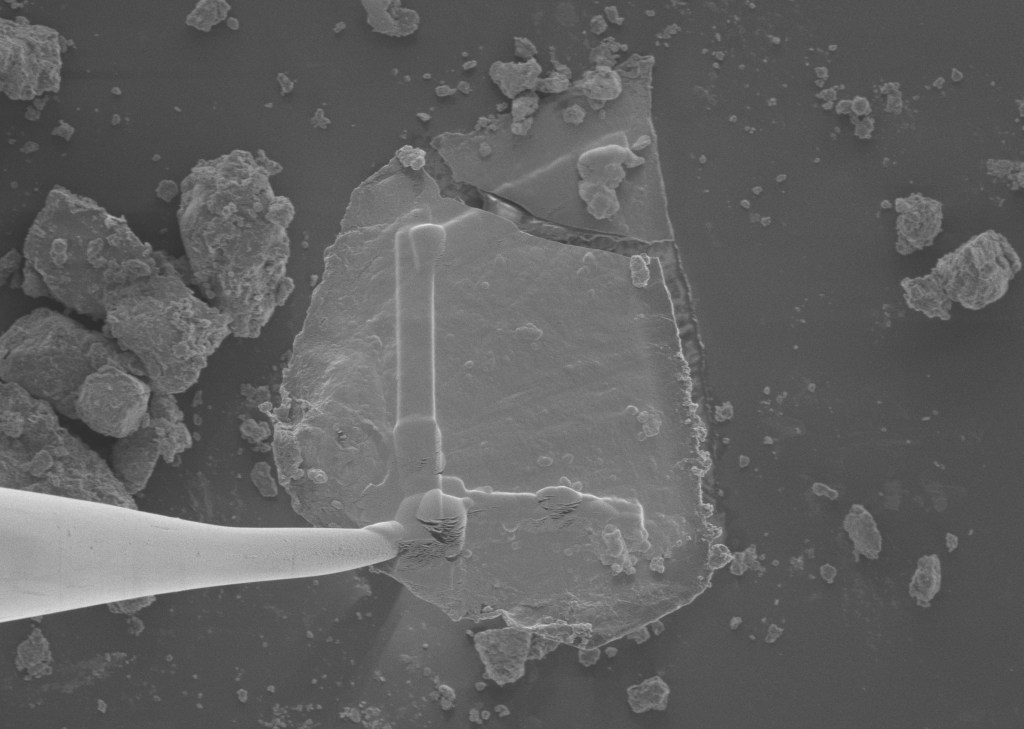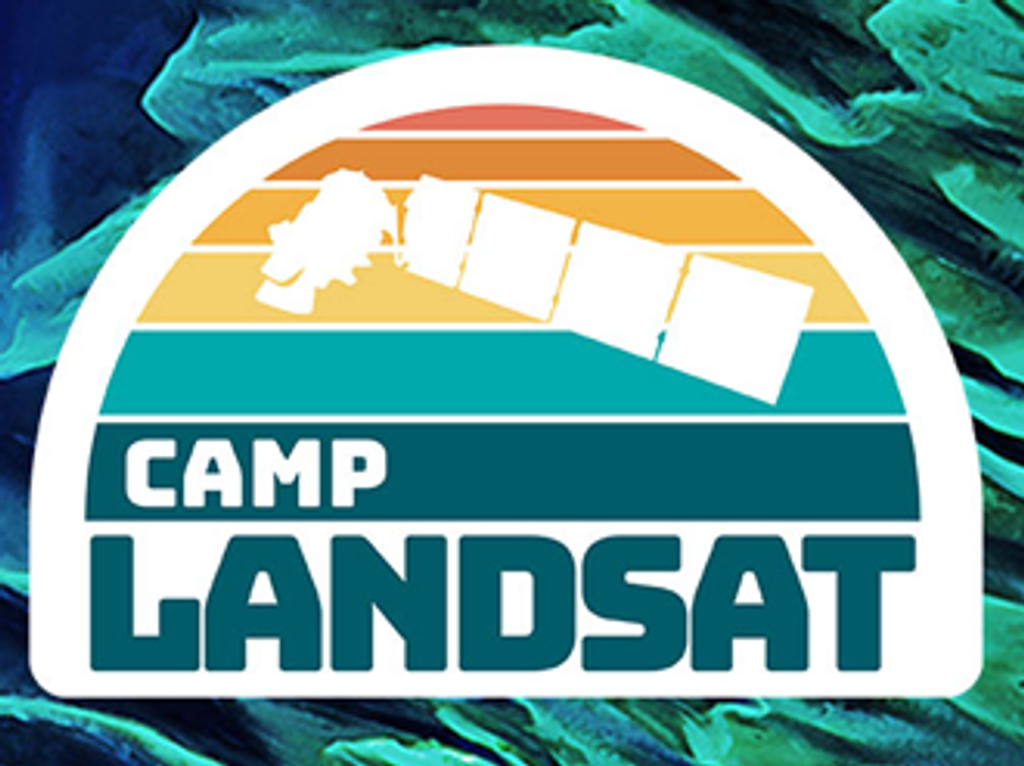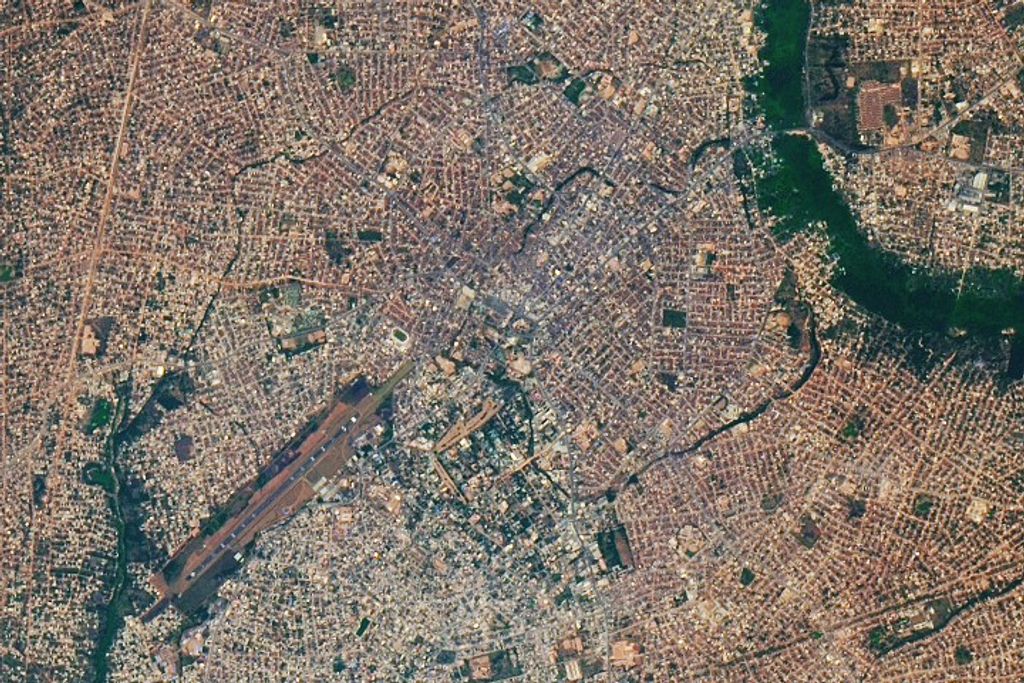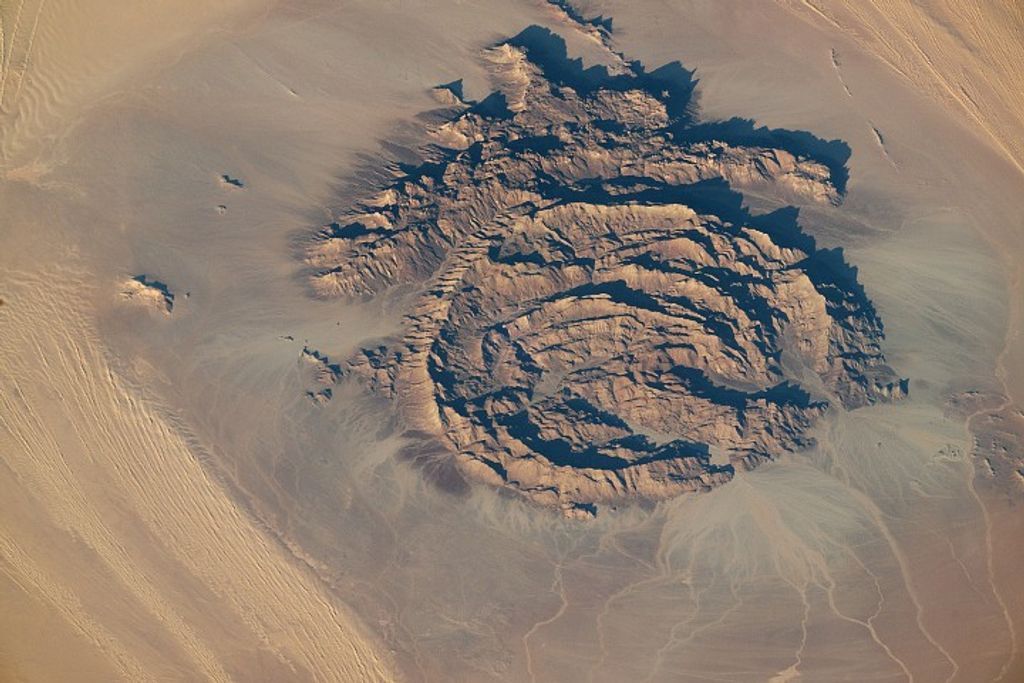It is noted that all scheduled parts of the Town Hall were open to a public audience so they could hear all presentations. The "Public Sessions" were for questions from the non-roadmap team attendees.
Agenda
6 May 2013
| Time | Topic | Speaker | Presentation |
|---|---|---|---|
| 10:00 – 10:10 | Welcome + Introduction | Chryssa Kouveliotou Brad Peterson Paul Hertz | |
| 10:10 – 10:30 | The Local Universe: In Pursuit of Cosmic Origins | Harold Yorke David Leisawitz | [PDF] |
| 10:30 – 10:50 | Advancing the Technology of Interferometry: the Tool for Mapping New Worlds | Stephen Rinehart Kenneth Carpenter | [PDF] |
| 10:50 – 11:10 | Future High-Angular Resolution UV-Optical Imaging Capability from Space | Marc Postman | [PDF] |
| 11:10 – 11:30 | Gas Flows in Galaxies: the Essential Role of UV Spectroscopy | Jason Tumlinson | [PDF] |
| 11:30 – 11:50 | Technological Challenges for a UV-Optical Flagship Mission | Dennis Ebbets | [PDF] |
| 11:50 – 12:10 | On the Need for High-Resolution Imaging | Julianne Dalcanton | |
| 12:10 – 12:30 | Public Session | ||
| 12:30 – 13:30 | Lunch Break | ||
| 14:30 – 14:50 | Gravitational Wave Astrophysics | Scott Hughes John Baker Matthew Benacquista | [PDF] |
| 14:50 – 15:10 | Gravitational Waves as a Probe of Fundamental Physics | Emanuele Berti | |
| 15:10 – 15:30 | Getting Educators Involved in Real Research — the NITARP Model in 30 Years | Luisa Rebull | [PDF] |
| 15:30 – 15:50 | Break | ||
| 15:50 – 16:10 | Advanced Mirror Technology Development for Large UVO Space Telescopes | Philip Stahl | |
| 16:10 – 16:30 | Technology Demonstration for Next-Generation Segmented Large Apertures | Renaud Goullioud | [PDF] |
| 16:30 – 16:50 | A Comprehensive Map of Galaxy and Black Hole Evolution over Cosmic Time | Leonidas Moustakas | [PDF] |
| 16:50 – 17:10 | Ultraviolet Observations of Active Galactic Nuclei and Their Environs | Gerard Kriss | [PDF] |
| 17:10 – 17:30 | Public Session |
7 May 2013
| Time | Topic | Speaker | Presentation |
|---|---|---|---|
| 10:00 – 10:20 | Observing the Entire Universe: Big Bang to Dark Sector | Jason Rhodes | [PDF] |
| 10:20 – 10:40 | Spectral Distortions of the CMB: A New Window to Early Universe Physics | Jens Chluba | [PDF] |
| 10:40 – 11:00 | Probing the Dark Ages and Cosmic Dawn | Joseph Lazio | |
| 11:00 – 11:20 | Origami Nanosat Telescopes Taking Science by Swarm | Franck Marchis Jeffery Livas | [PDF] [PDF] |
| 11:20 – 11:40 | Education/Public Outreach and Science Considerations for Data Visualization | Robert Hurt | [PDF] |
| 11:40 – 12:00 | Public Session | ||
| 12:00 – 13:00 | Lunch Break | ||
| 13:00 – 13:20 | Unveiling the Dawn of the Early Universe in X-rays | Martin Weisskopf | [PDF] |
| 13:20 – 13:40 | Science Horizons and Technology Challenges Beyond the Chandra X-ray Observatory | Alexey Vikhlinin | [PDF] |
| 13:40 – 14:00 | Microwave Kinetic Inductance Detectors for UVOIR and X-ray Astrophysics | Ben Mazin | |
| 14:00 – 14:20 | Distribution of Matter in and Around Galaxies | Norbert Schultz | [PDF] |
| 14:20 – 14:40 | Large-Format High Resolution X-ray Microcalorimeter Arrays | Simon Bandler | [PDF] |
| 14:40 – 15:00 | Break | ||
| 15:00 – 15:20 | Extreme Energy Particle Astronomy — UHECRs and CRs | John Mitchell Angela Olinto | [PDF] |
| 15:20 – 15:40 | Particle Acceleration and MeV Astronomy — Explosion Physics with Type I SNe | Eric Grove Ron Murphy | |
| 15:40 – 16:00 | Understanding Black Holes with X and gamma-ray Polarimetry | Jeremy Schnittman Mark McConnell | [PDF] |
| 16:00 – 16:20 | echnology Needs for MeV Gamma-ray Astronomy | Mark McConnell Tim Kallman | |
| 16:20 – 16:50 | Public Session |
Abstracts
The Team received over 100 abstracts for the Roadmap. Note that submitters were asked prior if they wanted to make their abstracts public or not.
Science Challenge
- Computational Astrophysics and Multimessenger Astronomy [PDF], John Baker
- Gravitational Waves as a unique window on the Universe [PDF], John Baker, Ira Thorpe, Tuck Stebbins, et al.
- Stellar and Galactic Astronomy with Ultracompact Binaries [PDF], M. Benacquista, K. Holley Bockelmann, V. Kalogera, et al.
- How Did the IMBSs Form That Grew to be the Massive Black Holes Found Today in Most Galactic Centers? [PDF], Peter L. Bender
- Initial Formation and Growth of IMBHs at High Redshifts [PDF], Peter L. Bender & M. C. Begelman
- Solar System Tests of Gravitational Theory and Measurement of J2 for the Sun [PDF], Peter L. Bender & Neil Ashby
- Active Galactic Nuclei (AGN) as an Alternate Probe of the Cosmic Expansion History [PDF], Marianne Vestergaard, Kelly D. Denney, & Misty C. Bentz
- Gravitational-Wave Astrophysics as a Probe of Fundamental Physics [PDF], Emanuele Berti, Scott Hughes, Michele Vallisneri, et al.
- Testing a Quantitative Model for Dark Energy [PDF], Peter L. Biermann & Benjamin C. Harms for Scott A. Hughes
- Gravitational Wave Astronomy as a Probe of Cosmic Evolution [PDF], Laura Blecha, Cole Miller, Sean McWilliams, John Baker
- Hot X-ray Coronae: A Unique Probe of Galaxy Formation [PDF], Ákos Bogdán
- AXSIO: The Advanced X-ray Spectroscopic Imaging Observatory [PDF], Jay Bookbinder, Robert Petre, Andrew Ptak, et al.
- Exploring New Worlds in the Search for Life [PDF], Jeff Booth
- Cosmic Rays: A Multimessenger View from Earth to Sources [PDF], T. J. Brandt
- Science Challenges Requiring Sub-Mas Angular Resolution UV/Optical Spectral Imaging Observations [PDF], K.G. Carpenter, W. Danchi, R. Lyon, et al.
- Understanding Particle Acceleration in the Remnants of Supernovae [PDF], Daniel Castro
- X-ray Timing of Black Holes and Neutron Stars [PDF], Deepto Chakrabarty
- Spectral Distortions of the Cosmic Microwave Background:a New Window to Early Universe Physics [PDF], J. Chluba, D. J. Fixsen, M. Kamionkowski, et al.
- VISTA: Visible Interferometric Space Telescope Array [PDF], Kevin Christopher Cooke
- On the Need for High-Resolution Imaging [PDF], Julianne Dalcanton
- Mass, Energy, Space and Time System Theory – MEST [PDF], Cao Dayong
- NASA at the Dawn of Multimessenger Astrophysics [PDF],Derek Fox
- Breakthrough Capability for the NASA Astrophysics Explorer Program: Reaching the Darkest Sky [PDF], Matthew A. Greenhouse, B. Mazin, S.H. Moseley, et al.
- Time-domain Spectroscopic Observatory (TSO) for TDA in Roadmap [PDF], Jonathan Grindlay, Neil Gehrels, Harvey Moseley, et al.
- Gamma Ray Spectroscopy: Explosion Physics of Supernovae Type Ia [PDF], J.E. Grove, M. Baring, D. Bhattacharya, et al.
- Light Dispersion Probe with Type Ia SN Observations [PDF], Herman Holushko
- Static Universe Probe with Type Ia SN Observations [PDF], Herman Holushko
- Determining the Speed of Magnetic Field Propagation in Vacuum [PDF], Herman Holushko
- Accreting Binaries Over Cosmic Time [PDF], A. Hornschemeier, B. Lehmer, A. Ptak, et al.
- Tracing the High-Z Hierarchical Growth of Galaxies with Black Hole Mergers [PDF], Scott A. Hughes
- Astrophysics with Gamma-Ray Polarimetry Above 1 MeV [PDF], S. Hunter, P. Bloser, G. de Nolfo, et al.
- X-ray and Gamma-ray Polarimetry Science NASA Astrophysics Roadmap Whitepaper [PDF], T. Kallman, M. McConnell, M. Baring, et al.
- Astrophysics Challenge [PDF], Michael Kowalski
- Ultraviolet Observations of Active Galactic Nuclei and their Environs [PDF], Gerard Kriss, Anton Koekemoer, Jennifer E. Scott, Smita Mathur (Ohio State)
- A Visit to the Nearest Dark Matter Clump [PDF], Brian Lacki
- Probing The Dark Ages and Cosmic Dawn [PDF], Joseph Lazio, Steven Furlanetto, Jack Burns for NLSI/LUNAR
- In Pursuit of Cosmic Origins [PDF], David Leisawitz
- Taking Science by Swarm [PDF], Jeff Livas, John Baker, Ira Thorpe, Tuck Stebbins
- Compact Objects in Globular Clusters [PDF], Tom Maccarone, Laura Chomiuk, Jay Strader, et al.
- Imaging the Relativistic Component of the Large Scale Structure [PDF], Maxim Markevitch
- Project Lyman: 11 Gyrs of MIB Evolution [PDF], Stephan McCandliss
- Nanohertz to Microhertz Gravitational Wave Astronomy [PDF], Sean McWilliams
- Millihertz to Decihertz Gravitational Wave Astronomy [PDF], Sean McWilliams
- Galactic Cosmic Ray Astrophysics [PDF], John W. Mitchell
- Extreme Energy Particle Astronomy [PDF], John W. Mitchell
- A Comprehensive Map of Galaxy and Black Hole Evolution over Cosmic Time [PDF], Leonidas Moustakas
- Future Astrophysics Unified Simulations [PDF], Ken-Ichi Nishikawa
- Future High-Angular Resolution UV-Optical Imaging Capability From Space [PDF], Marc Postman, Michael Fall, Jason Tumlinson
- NASA and Nanohertz Gravitational Wave Astronomy [PDF], A. Ransom
- Getting Educators Involved in Real Research – The Nitarp Model in 30 Years [PDF], Luisa Rebull, Carolyn Brinkworth, Varoujan Gorjian, et al.
- Observing the Entire Universe: Big Bang to the Dark Sector [PDF], Jason Rhodes
- Gravitational Wave Astronomy as a Probe of Galactic Nuclei [PDF], J. D. Schnittman, E. Berti, L. Blecha, et al.
- Understanding Black Holes with X-ray Polarimetry [PDF], J. D. Schnittman, K. Jahoda, P. Kaaret,et al.
- Distribution of Matter in and Around Galaxies [PDF], Norbert Schulz
- Constraining the Physics of Ultra-Dense Matter with X-Ray Observations of Neutron Stars [PDF], Slavko Bogdanov
- The Next 30 Years of NASA Astrophysics: How Do We Bring 400 Million People Along for the Journey? [PDF], Denise A. Smith, James G. Manning, Lindsay Bartolone, et al.
- Space UV and Visible Spectropolarimetry for Stellar Physics [PDF], M. Smith, A. ud-Doula, T. Ayres, et al.
- E/PO Considerations for Data Processing [PDF], Gordon K. Squires, Robert Hurt, Frank Summers, et al.
- E/PO and Science Considerations for Data Visualization [PDF], Gordon K. Squires, Frank Summers, Carolyn Brinkworth, et al.
- Advanced Mirror Technology Development for Large UVO Space Telescopes [PDF], A. Stahl
- Astrophysics Roadmap: Physical Processes in Extreme Conditions [PDF], D. Stern & M. Vallisneri
- Astrophysics Education, Public Engagement, & Communications: Inspiring and Educating with NASA [PDF], Amber Straughn, Barbara Mattson, Koji Mukai, et al.
- Science Impact of Improved Instrumentation -n Space-Based Gravitational-Wave Detection [PDF], Ira Thorpe, Jeff Livas, and Tuck Stebbins
- The Next Thirty Years of Gravitational Wave Astronomy [PDF], Ira Thorpe, John Baker, Jeff Livas, and Robin Stebbins
- Gas Flows in Galaxies: The Essential Role of UV Spectroscopy [PDF], Jason Tumlinson
- The Next Thirty Years of Gravitational Wave AstronomyTowards an Understanding of Dust Grain Alignment in the Interstellar Medium [PDF], John E. Vaillancourt and B-G Andersson
- Science Horizons & Technology Challenges Beyond the Chandra X-Ray Observatory [PDF], Alexey Vikhlinin
- Mapping Dark Matter with Antiparticles [PDF], Philip von Doetinchem
- Gravitational Wave Research from Space [PDF], Rainer Weiss
- Astrophysics Roadmap Science Challenge: Polarimetry of Spatially Unresolved Exoplanets [PDF], Sloane J. Wiktorowicz
- Accretion in High Magnetic Field Astrophysical Environments [PDF], M.T. Wolff, R.E. Rothschild, P.A. Becker, and C.A. Wilson-Hodge
- Dark Matter Emulators [PDF], Richard Woodard
- Formation and Evolution of Galaxies, Stars, and Planetary Systems: The Local Universe [PDF], H.W. Yorke
- Exploring Physics of Universe Using Space Laboratories [PDF], Nan Yu, Slava Turyshev, and Ulf Israelsson
Technology Challenge
- Technology Challenges for Enabling Future Low-Cost Large Aperture UV Telescopes in Space using a Photon Sieve (PS) [PDF], Airapetian, V. S., Carpenter, K. G., Davila, J., et al.
- Testing Gravitational Time Delay Predictions of General Relativity [PDF], Neil Ashby and Peter Bender
- Large-Format High Resolution X-ray Microcalorimeter Arrays [PDF], Simon Bandler
- Enabling Soft Gamma-Ray Focusing with Laue Lenses [PDF], Nicolas M. Barrière, Steven E. Boggs, John A. Tomsick, et al.
- Gravitational Wave Astrophysics; The Next Frontier in Understanding the Universe and LISA-2020; An Intermediate Scale Space Gravitational Wave Observatory for This Decade [PDF], S. Buchman, J.A. Lipa and R.L. Byer
- Technology Challenges for 21-cm Cosmology [PDF], Jack Burns, J. Lazio, J. Bowman for NLSI/LUNAR
- Technology Challenges for Obtaining Sub-Mas Angular Resolution UV/Optical Spectral Imaging Observations [PDF], K.G. Carpenter, W. Danchi, R. Lyon, et al.
- Science Challenges Requiring Sub-Mas Angular Resolution UV/Optical Spectral Imaging Observations [PDF], K.G. Carpenter, W. Danchi, R. Lyon, et al.
- Technological Challenges for a UV-Optical Flagship Mission [PDF], Dennis Ebbets
- Lowering Mission Cost by Changing Space Engineering Practice [PDF], Martin Elvis
- Technology Demonstration for Next-generation Segmented Large Apertures [PDF], Renaud Goullioud, Mark Boyles, Fengchuan Liu, et al.
- Breakthrough Capability for the NASA Astrophysics Explorer Program: Reaching the Darkest Sky [PDF], Matthew A. Greenhouse, B. Mazin, S.H. Moseley, et al.
- Soft X-ray Polarimetry Instrumentation for the NASA Astrophysics Roadmap [PDF], Herman L. Marshall, Ralf Heilmann, and Norbert S. Schulz
- Microwave Kinetic Inductance Detectors for UVOIR and X-ray Astrophysics [PDF], Ben Mazin
- Technology Development for X-ray and Gamma-Ray Polarimetry [PDF], M. McConnell, M. Baring, P. Bloser, et al.
- Technology Needs for MeV Gamma-Ray Astronomy [PDF], M. McConnell, M. Baring, D. Bhattacharya, et al.
- Advancing the Technology of Interferometry: The Tool for Mapping New Worlds [PDF], S. Rinehart, M. Fridlund, S. Unwin, G. van Belle
- Intensity-Correlation Imaging of Dark Objects in Space [PDF], Dmitry V. Strekalov, Baris I. Erkmen, and Nan Yu
- Unveiling the Dawn of the Early Universe in X-rays [PDF], Martin C. Weisskopf
- Put X-Ray Polarimetry on the MAP! [PDF], Martin C. Weisskopf
- Lightweight and Diffraction-Limited X-ray Telescopes [PDF], William W. Zhang
Documents
News Straight to Your Inbox
Subscribe to your community email news list
We will never share your email address.


























